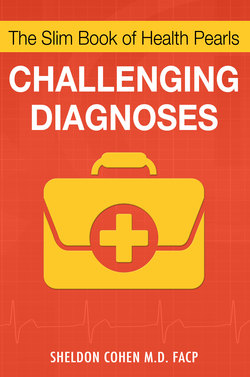Читать книгу The Slim Book of Health Pearls: Challenging Diagnoses - Sheldon Cohen - Страница 5
На сайте Литреса книга снята с продажи.
SPECIFIC IMMUNITY
ОглавлениеLet us define immunity again: the body’s ability to defend against specific invaders (viruses, bacteria, toxins, parasites).
This is a very complex subject, the details of which could probably occupy ten volumes. I am going to discuss it, if for no other reason than to acquaint you with the complexity that has evolved in the last sixty years from very little knowledge of the subject of immunity to the great detail and understanding of today.
An antigen is a foreign substance that invokes an immune response. The ability of the body to recognize a foreign molecule (antigen) also means that the body can recognize self from non-self and can memorize. This means that the next time the foreign invader returns, the body will be able to launch an immediate and vigorous response because they have prepared themselves in greater volume of numbers to be ready for another onslaught by the same invader.
Remember that the lymphocyte B cells and T cells both develop from the stem cells in the red bone marrow:
•T cells form in the bone marrow (pre-T cells), and they migrate to the thymus where they complete their development and become immunocompetent T cells. Immunocompetent means they have the ability to carry out immune responses.
•B cells complete their development in the bone marrow.
Both B and T cells then circulate in the blood stream, but not before they have acquired surface proteins (antigen receptors), molecules that are capable of recognizing specific antigens.
The red bone marrow and thymus gland are primary lymphatic organs because they produce B and T cells. The thymus gland lies behind the sternum and extends upward to the base of the neck. At birth, it weighs about half an ounce (10-15 grams). It grows until puberty when it reaches about 1½ ounces (30-40 grams). After this, it begins to atrophy so that by age forty it is back to birth size and by age seventy it is less than ten grams. Most of the body’s T cells develop before puberty. Some develop throughout life, but to a lessened degree. As we advance in years, the effectiveness of our T cell response decreases making us more susceptible to disease.
The thymus liberates a hormone known as thymosin, which stimulates the growth of the thymus and the development of the lymphocytes. Once the lymphocytes have matured, they take up station in one of three places: some remain in the thymus and are the source of future T cell lymphocyte needs; some enter the blood circulation; and some lodge in other lymphoid tissue.
